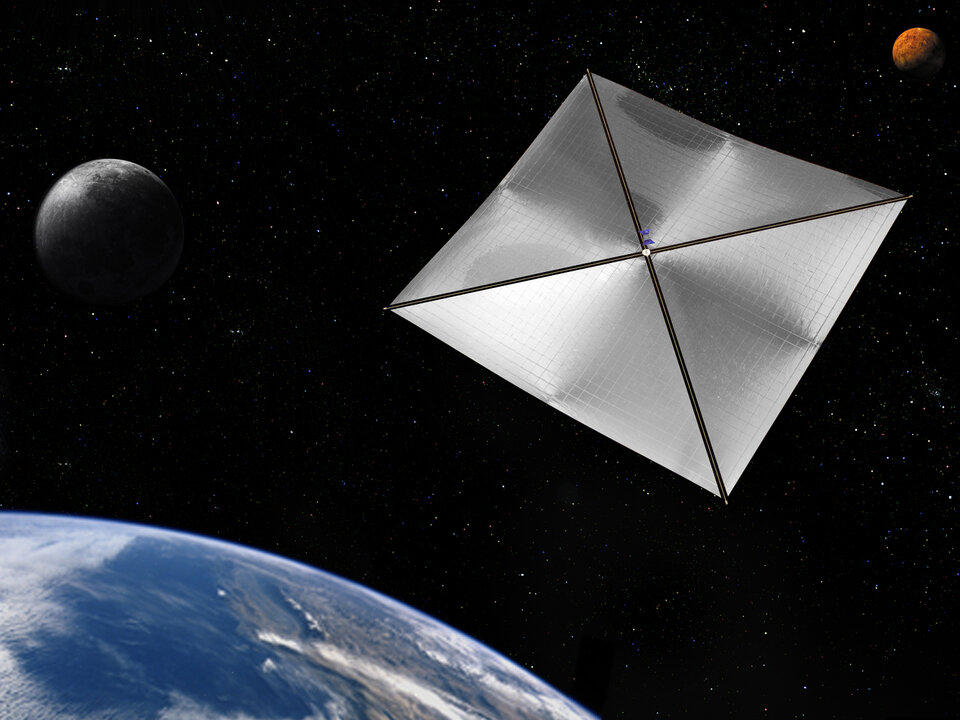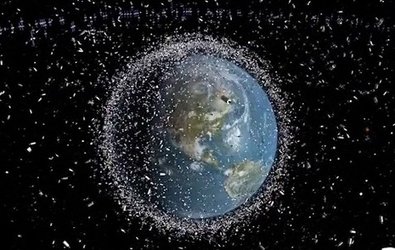Developing anti-space debris technologies
ESA is teaming up with Europe’s satellite makers and equipment suppliers to evaluate candidate technologies to prevent the generation of space debris in key orbits by future space missions.
“This marks the first time that Europe’s three large satellite prime contractors – Airbus Defence & Space, Thales Alenia Space and OHB – have worked together in this way on a single contract,” explains Tiago Soares of ESA’s CleanSat programme.
“They will be gathering at ESA’s ESTEC technical centre along with subsystem suppliers and ESA experts to design the most promising technology building blocks to ensure Europe’s future low-orbit satellite designs are fully compliant with space debris regulations.”
These three companies are like Europe’s Formula 1 teams for space: designing uniquely challenging machines, relying on networks of smaller high-tech suppliers – and normally fiercely competitive. But space debris is a big enough problem to bring them together.

Some region of space are more useful – and therefore more valuable – than others. Geostationary orbit, providing stable points relative to Earth’s surface for telecommunications and meteorology, has been safeguarded for many years through international anti-debris regulations.
These ensure that geostationary ‘slots’ are vacated when a satellite reaches its end of life, preventing derelict satellites from interfering with live missions or becoming a source of space debris.
Now regulations have been extended to the heavily trafficked low-orbit region, less than 2000 km above our planet’s surface.
Among the key requirements: that all future missions can fully ‘passivate’ themselves to remove any chance of an orbital explosion; that they remove themselves from this orbital region within 25 years of their end of life; and that any atmospheric reentry has a less than one in 10 000 chance of harming anyone on the ground.

“Meeting these requirements carries heavy implications for satellite platform designs,” adds Tiago. “So with CleanSat the aim is to do it on a coordinated industry-wide basis, to identify key building blocks that can be developed jointly, to foster common supply chains and reduce costs and boost general European competitiveness.
“We began by asking the three prime contractors to tell us their priority areas, then put out a general announcement of opportunity for the suppliers to propose technologies based on them.
“From these proposals we have come to a shortlist of 28 concepts that will now be studied over the course of 2016 in our Concurrent Design Facility, using networked software tools to work together in real time.

“The primes will be joined by equipment companies as well as ESA’s technical experts and representatives of ESA’s Directorates of Earth Observation and Telecommunication and Integrated Applications – as the leading Agency users of low orbits.
“The most promising concepts will go on to full development contracts over the two to three years that follow, so that they should be available for future ESA and European missions by the decade’s end.”
The building blocks under study include propellant tanks and other equipment specially engineered to burn up in the atmosphere, new high-thrust engines or solid rocket motors dedicated to deorbiting, unfolding sails that serve to increase atmospheric drag and an unfurled tether that interacts with Earth’s magnetic field to function as an electromagnetic brake.
Other candidates enable satellites to operate more efficiently throughout their lifetime, leaving extra fuel that can be dedicated to deorbiting. Examples include methods of replenishing fuel tank pressure and new wireless temperature sensors to reduce the need for cabling and therefore mission mass.






